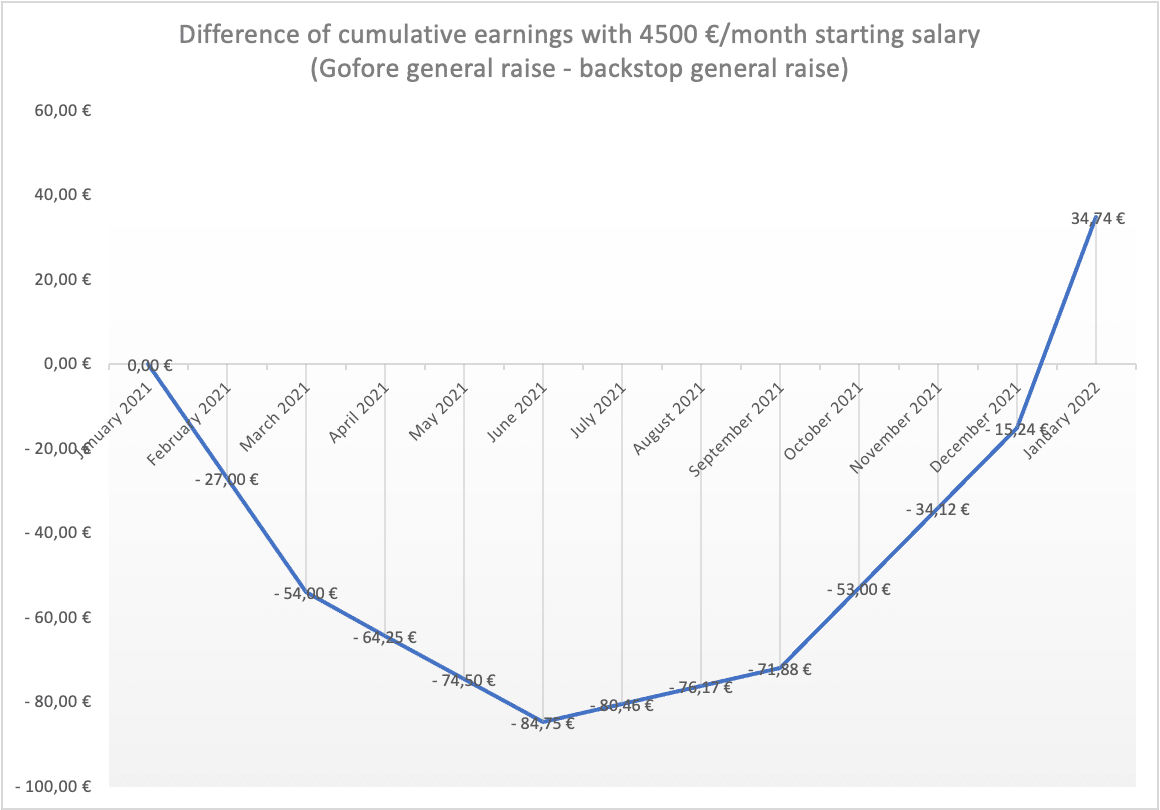How would a general rise of 2.31% sound like? The company-specific collective agreement we made at Gofore in early 2022 has attracted widespread interest. In my opinion, the most interesting thing about the collective agreement is its salary settlement, where the general rise and, more broadly, the minimum amount of salary rises are based on the Gofore Group’s profitability and growth. The salary settlement also allowed the Gofore collective agreement to be made valid until further notice, instead of having to be renegotiated every year or two like other collective agreements.
However, the salary settlement is not entirely brand new. About a year ago, the Gofore chief shop steward, I was negotiating a local salary settlement for Gofore, and CEO Mikael Nylund presented us with an interesting idea: What if the size of the salary rises depended on Gofore’s profitability and growth? Mikael wanted the salary rises to reflect Gofore’s financial success. When Gofore is doing well, it can pay better salaries and the rises should be higher. At economically worse times, salaries could rise less.
Together with the shop stewards, we found the idea interesting, and we started creating a salary settlement based on it. We finally came up with a solution where salaries are increased quarterly based on EBITA% and organic growth for the previous quarter, according to the following formula: (EBITA% – 10 %) * 0,07 + (organic growth% * 0,0125). Furthermore, as such a solution would delay the general rises compared to the backstop settlement in the collective agreement, it was decided to pay a general rise of 0.6% in February to compensate for this.
The salary settlement was calibrated so that, if the previous year’s figures were reached, the earnings in 2021 would be approximately equal to the earnings of 1.2% general rise in February which was the backstop settlement. If we did worse, the rises would be lower, and if we did better, the rises would be higher.
(What does a backstop settlement mean? Collective agreements stipulate that certain matters may be agreed upon differently through local agreements, and e.g. in the IT service sector collective agreement, salary rises must be negotiated primarily locally. However, if no agreement is reached, the settlement in the collective agreement i.e. the so-called backstop must be followed. The backstop for salary rises in our case was a 1.2 % general rise in February plus a 0.8 % company-specific element, which the employer can distribute as they wish. At Gofore, this 0.8% element had already been distributed by the beginning of the negotiations, so we only discussed a general rise.)
We still voted with the staff on whether they would prefer a 1.2% pay rise in February or the salary settlement described above. With clear numbers, the employees chose our settlement.
How did we do over the year?
Gofore’s last year’s results were announced at the end of February, and we were finally able to calculate the general rise for the last quarter of the salary settlement. Was our salary settlement worth it or should we have stuck to the backstop?
The general rises during the year were as follows:
February: 0,6 %
2021Q2: 0,37 % (April)
2021Q3: 0,32 % (July)
2021Q4: 0,32 % (October)
2022Q1: 0,68 % (January)
The total increase from these will be (note the compound interest) ~2.31%. The graph below helps compare the 1.2 % February rise to our salary settlement. If a person’s salary in January 2021 was 4,500.00 €/month, with the 1.2% general raise their salary in January 2022 would have been 4,554.00 €/month and 4,603.98 €/month with our salary settlement.

However, the overall increase does not tell the whole story, as you also need to look at cumulative earnings. As can be seen from the following graph, with a starting salary of 4,500 €/month: one will start by earning less than with the 1.2 % February rise. At worst, in June the difference is € -84.75, but by January 2022 the difference of cumulative earnings is a positive € 34.74. In other words, the wage settlement was worth it from an employee’s perspective if they were employed still in January.

The biggest winners here are those who only started their work during or after February and would thus have missed the general rise in February. However, due to Gofore’s salary settlement, they received their first general rise as early as April.
Of course, general increases are only part of salary rises. In 2021, the average salary of Gofore employees increased by as much as 4.9%.
The Gofore collective agreement signed earlier this year made the salary settlement even better: the organic growth coefficient has been increased 0.0125 → 0.015 and in addition to the general rises, at least the same amount of personal salary rises must be distributed.
During the year, we’ll see how good salary rises we’ll get with the new salary settlement. Looking good so far!
Juho Salmi, Gofore’s shop steward, 2020-2021



